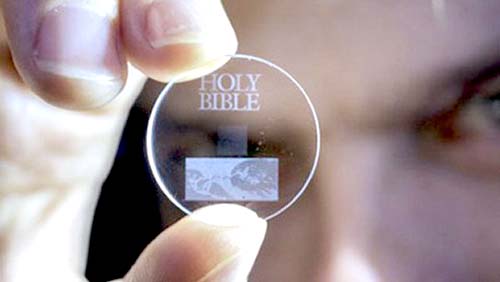Glass data storage preserves data indefinitely
If you know anything about glass, you know that glass lasts forever. It may break, but it will always be glass. It doesn’t deteriorate like organic materials do. A bottle in the landfill today will still be a bottle in the landfill 2,000 years from now. So glass data storage makes a lot of sense.
Glass data storage could preserve all of human history
Researchers at the University of Southampton have created a new way of storing digital data using the nanostructure of glass. The glass data storage process uses a technique known as 5-dimensional data storage, which was first described just three years ago.
A 1-inch disk can store about 350 terabytes of data with no degradation over the disk’s estimated 13.8 billion year lifespan. The disk can also stand up to some downright inhospitable temperatures, retaining the data intact at temperatures of up to 375° F.
The system takes advantage of a much richer data encoding scheme to preserve a higher volume of data in a smaller space. Unlike traditional binary data encoding schemes that can only record one of two states, the 5-dimensional encoding scheme can record five states on tiny structures inside the glass disks known as nanogratings. The nanogratings can encode information using their orientation, refraction, and its location in space on the x, y, and z axes, providing much more “space” for information storage.
Glass is an attractive medium because it is stable in a wide variety of environments. It does not warp or change, nor does it break down or interact with other chemicals in the atmosphere. UV radiation does not affect the glass medium, either.
The data is written to the glass disk by special lasers that aren’t likely to be commercialized very soon, but reading devices could be made relatively inexpensively. Hitachi is also working on a glass data storage system, and liquid data storage is also in the works.
At GlassPaint.com, we’re big fans of the nanoproperties of glass. Glassprimer™ glass paint is specially designed to interact with the nanosurface of glass to create permanent bonds. When you work with Glassprimer™ glass paint, you can be certain that you’ll get outstanding coverage, and a tough, UV-resistant surface for your glass projects. For glass inspiration, please check out the rest of our site. If you’d like to purchase Glassprimer™ glass paint, please visit our online store .
Photo Credit: University of Southampton

